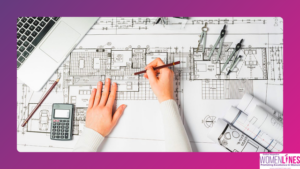3 Modern Techniques Architects Should Utilize
Architects must continually innovate to remain competitive. Incorporating sustainable designs, prioritizing health and well-being, and utilizing advanced technology are essential techniques for modern architects. These strategies not only enhance their craft but also benefit society and the environment, ensuring they stay ahead of the curve.
Incorporating Sustainable and Green Designs
The importance of sustainability in today’s architectural practices cannot be overstated. As the world grapples with climate change and environmental degradation, architects hold a critical role in shaping a sustainable future. Green design is no longer a niche concept but a necessary shift in how we conceive and construct our built environments.
Embracing Renewable Materials and Energy Efficiency
One of the foundational elements of sustainable architecture is the use of renewable materials. Architects can significantly reduce the carbon footprint of their buildings by selecting materials that are sustainably sourced and have low environmental impact. For example, bamboo and reclaimed wood are excellent choices that offer both durability and aesthetic appeal.
Moreover, energy efficiency is a cornerstone of sustainable design. Integrating energy-efficient systems such as high-performance insulation, solar panels, and energy-efficient windows can drastically reduce a building’s energy consumption. These systems not only lower utility costs but also contribute to a reduction in greenhouse gas emissions.
Innovative Green Design Elements
Innovative green design elements like green roofs and vertical gardens are gaining popularity for their environmental benefits. Green roofs, for instance, provide insulation, reduce urban heat island effects, and manage stormwater. Vertical gardens, on the other hand, improve air quality and enhance the aesthetic appeal of buildings.
Natural lighting and ventilation are other critical components of sustainable design. By strategically positioning windows and incorporating open floor plans, architects can maximize natural light and airflow, reducing the need for artificial lighting and mechanical ventilation. This not only conserves energy but also creates healthier indoor environments.
Designing for Health and Well-being
Architectural design profoundly impacts public health and well-being. Beyond aesthetic and functional aspects, architects have the opportunity to create spaces that promote physical and mental health.
Biophilic Design
Biophilic design is an approach that integrates natural elements into the built environment to enhance human well-being. This design philosophy is based on the idea that humans have an innate connection to nature, and incorporating natural elements into buildings can reduce stress, improve mood, and increase productivity.
Elements of biophilic design include the use of natural materials, such as wood and stone, abundant natural light, and views of nature. Indoor plants and water features can also be integrated to create a calming and rejuvenating environment. Studies have shown that biophilic design can significantly enhance the quality of life for building occupants.
Intelligent Daylighting and Ventilation
Intelligent daylighting and ventilation strategies are crucial for creating healthy indoor environments. Properly designed daylighting systems ensure that natural light penetrates deep into interior spaces, reducing the need for artificial lighting and creating a pleasant atmosphere.
Ventilation is equally important for maintaining indoor air quality. Architects can incorporate passive ventilation techniques, such as operable windows and ventilation shafts, to ensure a continuous flow of fresh air. Mechanical ventilation systems can also be designed to be energy-efficient and effective in removing indoor pollutants.
 Utilizing Advanced Technology in Design and Construction
Utilizing Advanced Technology in Design and Construction
The digital revolution has ushered in a plethora of advanced tools and technologies that are transforming the architectural landscape. Modern architects must leverage these technologies to stay competitive and enhance their design and construction processes.
Building Information Modeling (BIM)
Building Information Modeling (BIM) is a groundbreaking technology that allows architects to create detailed digital representations of their projects. BIM facilitates collaboration among all stakeholders, including architects, engineers, and contractors, by providing a shared platform for information exchange.
BIM enables architects to visualize the entire construction process, identify potential issues early, and make informed decisions. This technology enhances efficiency, reduces errors, and ultimately leads to better project outcomes. For example, BIM can simulate the performance of building systems under various conditions, allowing for optimization before construction begins.
3D Printing and AI Integration
3D printing is revolutionizing the way architects create models and components. This technology allows for the rapid production of complex and customized designs at a fraction of the cost and time required by traditional methods. Architects can use 3D printing to create detailed physical models that help clients visualize the final product and make informed decisions.
Artificial Intelligence (AI) is another transformative technology in architecture. AI can analyze vast amounts of data to optimize designs and predict potential issues. For instance, AI algorithms can assess energy consumption patterns and suggest design modifications to improve efficiency. AI also aids in automating repetitive tasks, freeing up architects to focus on creative aspects of design.
3D Laser Scanning
3D laser scanning is a technique that captures precise measurements of existing structures and sites. This technology creates accurate digital models that serve as a foundation for renovation and restoration projects. By using 3D laser scanning, architects can ensure that their designs are based on accurate data, reducing the risk of errors and rework.
Conclusion
Incorporating sustainable and green designs, prioritizing health and well-being, and utilizing advanced technology are three modern techniques that architects must embrace to stay ahead in their field. By adopting these practices, architects can create innovative, efficient, and sustainable buildings that positively impact both society and the environment. As the architectural landscape continues to evolve, staying informed and adaptable is key to success. These techniques not only enhance an architect’s ability to deliver exceptional projects but also contribute to a healthier and more sustainable world.
Also Read, Celebrate World Environment Day with Eco-Friendly Products
Follow Womenlines on Social Media













 Subscribe to Womenlines, the top-ranked online magazine for business, health, and leadership insights. Unleash your true potential with captivating content, and witness our expert content marketing services skyrocket your brand’s online visibility worldwide. Join us on this transformative journey to becoming your best self!
Subscribe to Womenlines, the top-ranked online magazine for business, health, and leadership insights. Unleash your true potential with captivating content, and witness our expert content marketing services skyrocket your brand’s online visibility worldwide. Join us on this transformative journey to becoming your best self! 






